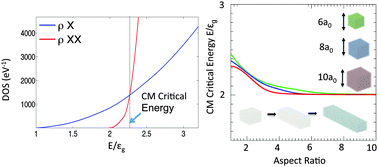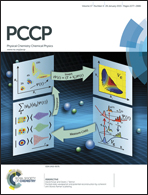Origins of improved carrier multiplication efficiency in elongated semiconductor nanostructures
Abstract
Nanorod solar cells have been attracting a lot of attention recently, as they have been shown to exhibit a lower carrier multiplication onset and a higher quantum efficiency than quantum dots with similar bandgaps. The underpinning theory for this phenomenon is not yet completely understood, and is still the subject of ongoing study. Here we conduct a theoretical investigation into CM efficiency in elongated semiconductor nanostructures with square cross section made of different materials (GaAs, GaSb, InAs, InP, InSb, CdSe, Ge, Si and PbSe), using a single-band effective mass model. Following Luo, Franceschetti and Zunger we adopt the CM figure of merit (the ratio between biexciton and single-exciton density of states) as a measure of CM efficiency and investigate its dependence on the aspect ratio for both (a) constant cross section (i.e. varying the volume) and (b) constant volume (i.e., varying the cross section), by decoupling electronic structure effects from surface-related effects, increased absorption and Coulomb coupling effects. The results show that in both (a) and (b) cases elongation causes an increase in both single- and bi-exciton density of states, with the latter, however, growing much faster with increasing energy. This leads to the availability of more bi-exciton states than single-exciton states for photon energies just above the bi-exciton ground state and therefore suggests a higher probability of CM at these energies for elongated structures. Our results therefore show that the origin of the observed decrease of the CM threshold in elongated structures can be attributed purely to electronic structure effects, paving the way to the implementation of CM-efficiency-boosting strategies in nanostructures based on the lowering of the CM onset.


 Please wait while we load your content...
Please wait while we load your content...